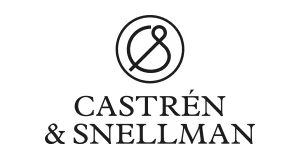In our previous blog concerning Loan Market Association's (LMA) model provisions, we mentioned that sustainability-linked loans have become increasingly common in recent years. To respond to this development, the LMA published in October a term sheet model as part of LMA's leveraged term sheet model to continue and supplement the earlier published model provisions.
The recently published term sheet model reflects the contents of the model provisions published by the LMA in May. It also promotes the standardisation of documents used in the market and streamlines the drafting practices and the negotiation process between the parties, offering the parties to a loan transaction an effective and useful framework for the negotiation process. The published model can be considered very user-friendly as it separates sustainability-related special requirements into their own part.
It is noteworthy that the term sheet model does not include special conditions precedent concerning loan sustainability, nor are there any such conditions in the earlier published model provisions. The lack of conditions precedent can be deemed to provide the parties room to negotiate these conditions on a case-by-case basis. In addition, it should be noted that if the sustainability classification of a loan is removed, it is not possible to re-classify the loan as sustainability-linked at a later stage.
The term sheet model presents, among other things, four Key Performance Indicators, which demonstrates that several performance indications are necessary to make sure that a product is sustainable. The model also includes a mechanism that can be used to either increase or decrease the margin in accordance with the number of Sustainability Performance Targets achieved. The mechanism is flexible as it makes it possible to not adjust or increase the margin if fewer than two Sustainability Performance Targets are achieved. If the loan's classification as a sustainable loan is removed, adjusting the margin will cease instead of increasing the margin to the highest possible alternative. The purpose is to ensure that the financial effects of the loan remain the same as they would have been if the loan had not been sustainability-linked in the first place.
The increasing significance of sustainability aspects in transactions and the demand for sustainable investment opportunities have led to the current guidelines and models being supplemented in all areas of sustainable financing. As the publication of the term sheet model shows, the debt financing market is no exception. The term sheet model and the earlier published model provisions offer essential guidelines for market participants and make it possible to offer reliable sustainability-linked loan products.
The content of this article is intended to provide a general guide to the subject matter. Specialist advice should be sought about your specific circumstances.


